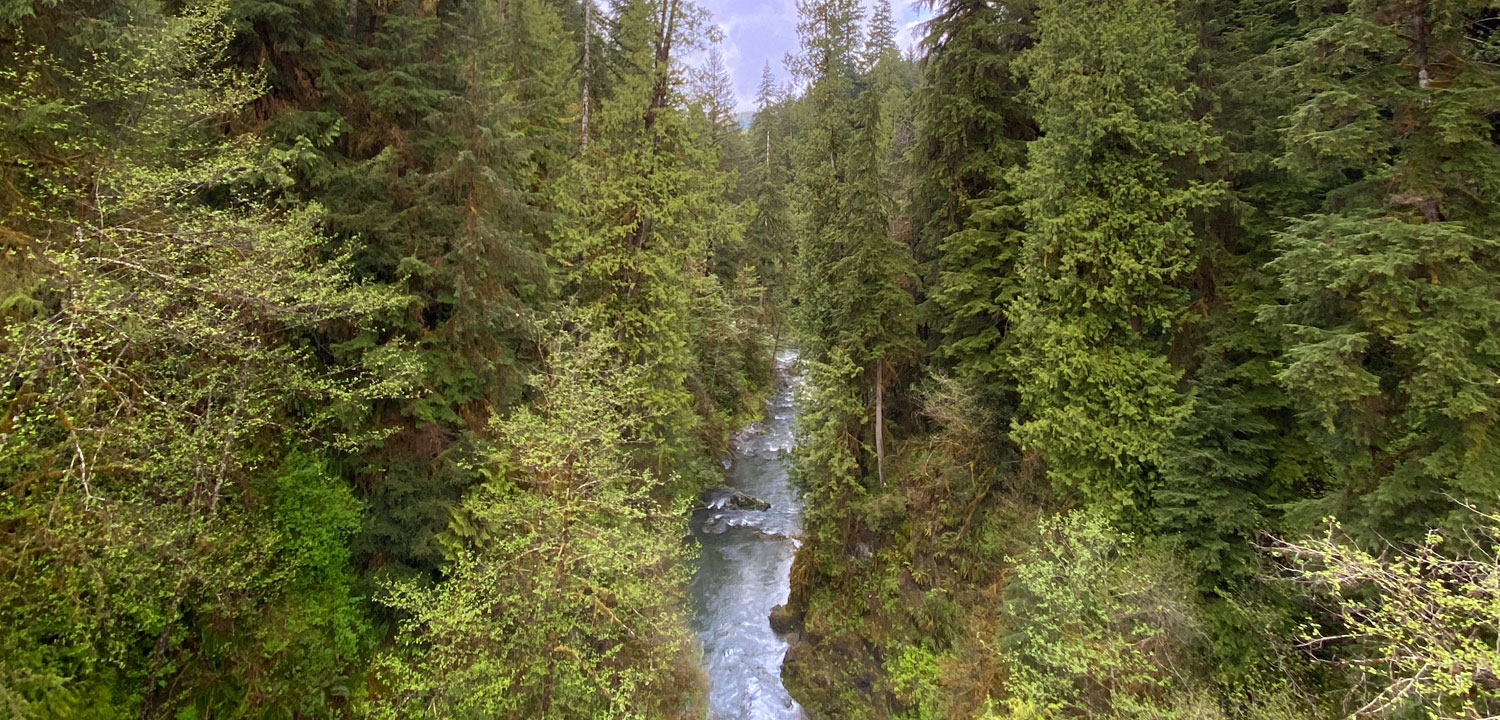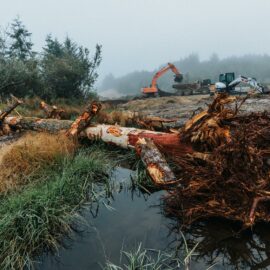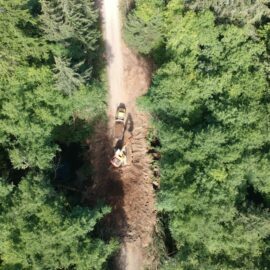The Forest Service had a backlog of critical road projects near the Sitkum River. We’re partnering with local forestry crews to get the work done.
All this month, local construction crews are at work to decommission a 1.5-mile stretch of U.S. Forest Service Road 2900072 above the Sitkum River.
It’s the last project on a USFS checklist of road storage and decommissioning priorities first identified in 2012 in this steep drainage. Aging and unstable roads like this one are prone to slump and shed sediment into the Sitkum, making them unsafe for motorized transport. And during intense rain events, like the atmospheric rivers of 2021, they can wash out completely.
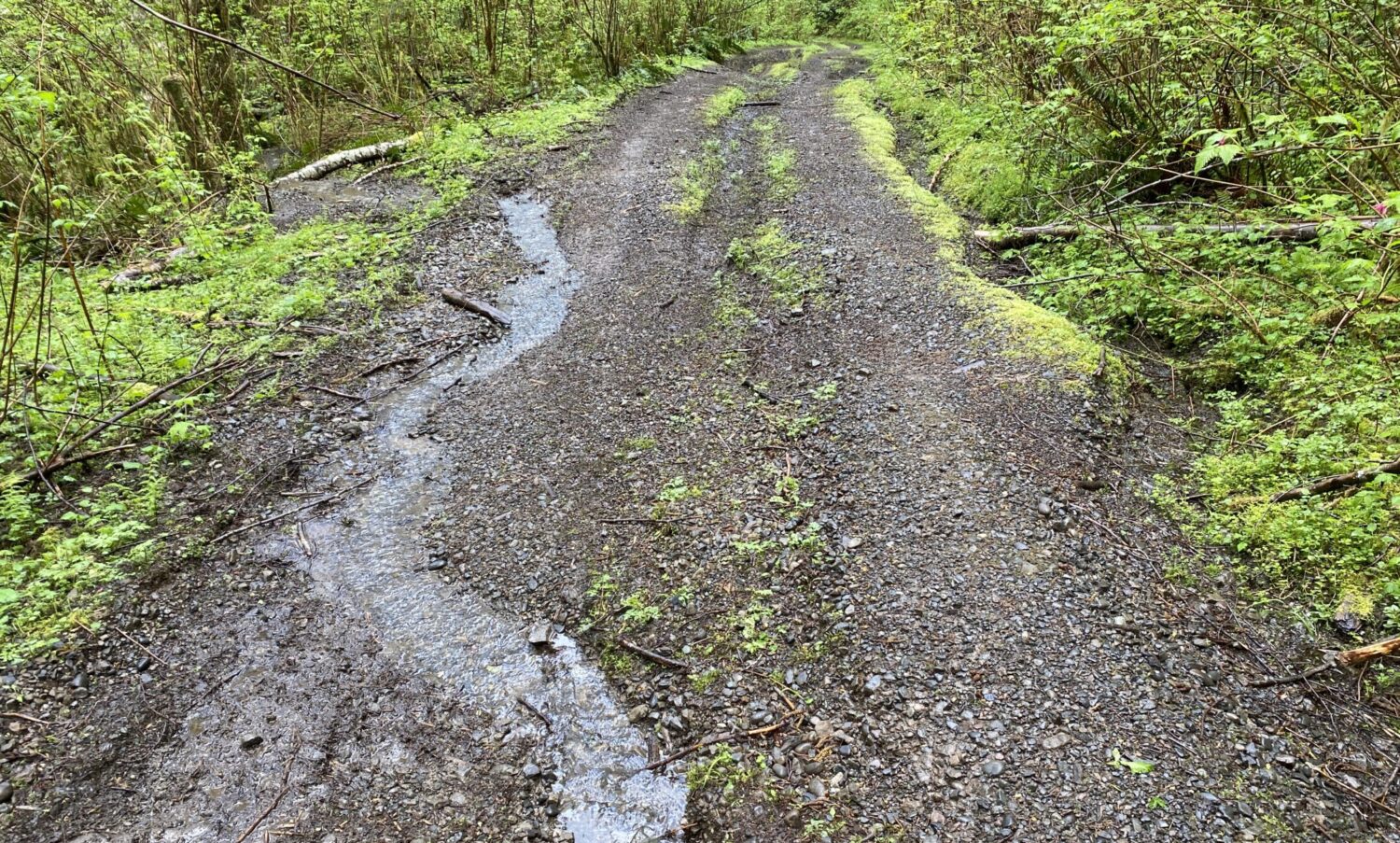
That’s bad news for road users, and also salmon and steelhead that live downstream in the Calawah River and Quillayute mainstem.
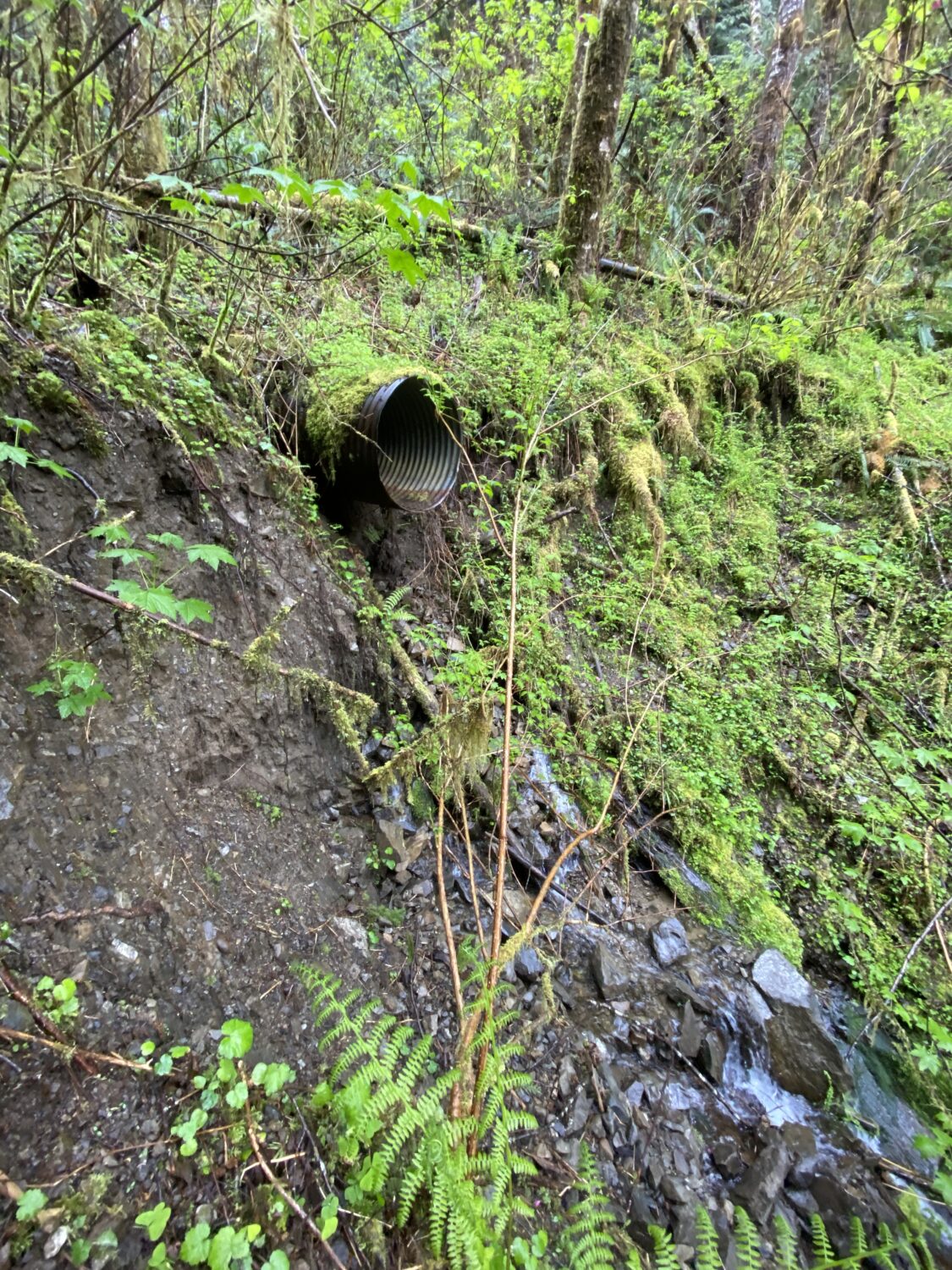
During intense rains, road fill and debris travel down to the Calawah, where it can kill adult wild fish, smother redds, and wreak long-term havoc on the food webs that sustain salmon and other species.
“When some old roads get to a certain point, it makes both economic and ecological sense to safely accelerate their return to nature before they do further damage,” says Betsy Krier, Wild Salmon Center’s Forks-based Salmon Habitat Specialist. Krier is helping to supervise work on the 2900072 project.
“Projects like this permanently remove threats for downstream fish,” she adds. “And they’re designed to transform these roads into routes that are still available for non motorized recreational and subsistence uses.”
Since 2016, the Forest Service has partnered with WSC and other regional conservation groups to help tackle its growing backlog of fish barrier corrections and restoration projects. These partners contribute technical capacity and project management to get the work done. They also bring in funding that stays in local communities.
To date, the partners have successfully leveraged more than $750,000 in Forest Service seed money to recruit another $550,000 in funding for the Sitkum projects. That includes a new $275,000 grant for the 2900072 road project from the Washington Coast Restoration and Resiliency Initiative, a state funded program.
This funding is sustaining good-paying jobs for local crews. This July, for example, Amanda Park contractor Mike Nelson of Olympic Resources is leading the 2900072 road work.
When the project wraps up this August, nearly 20 miles of road treatment will have been completed in the Sitkum subwatershed: work that’s employed dozens of foresters, heavy equipment operators, and other skilled workers.
“When some old roads get to a certain point, it makes both economic and ecological sense to safely accelerate their return to nature before they do further damage.”
WSC Salmon Habitat Specialist Betsy Krier
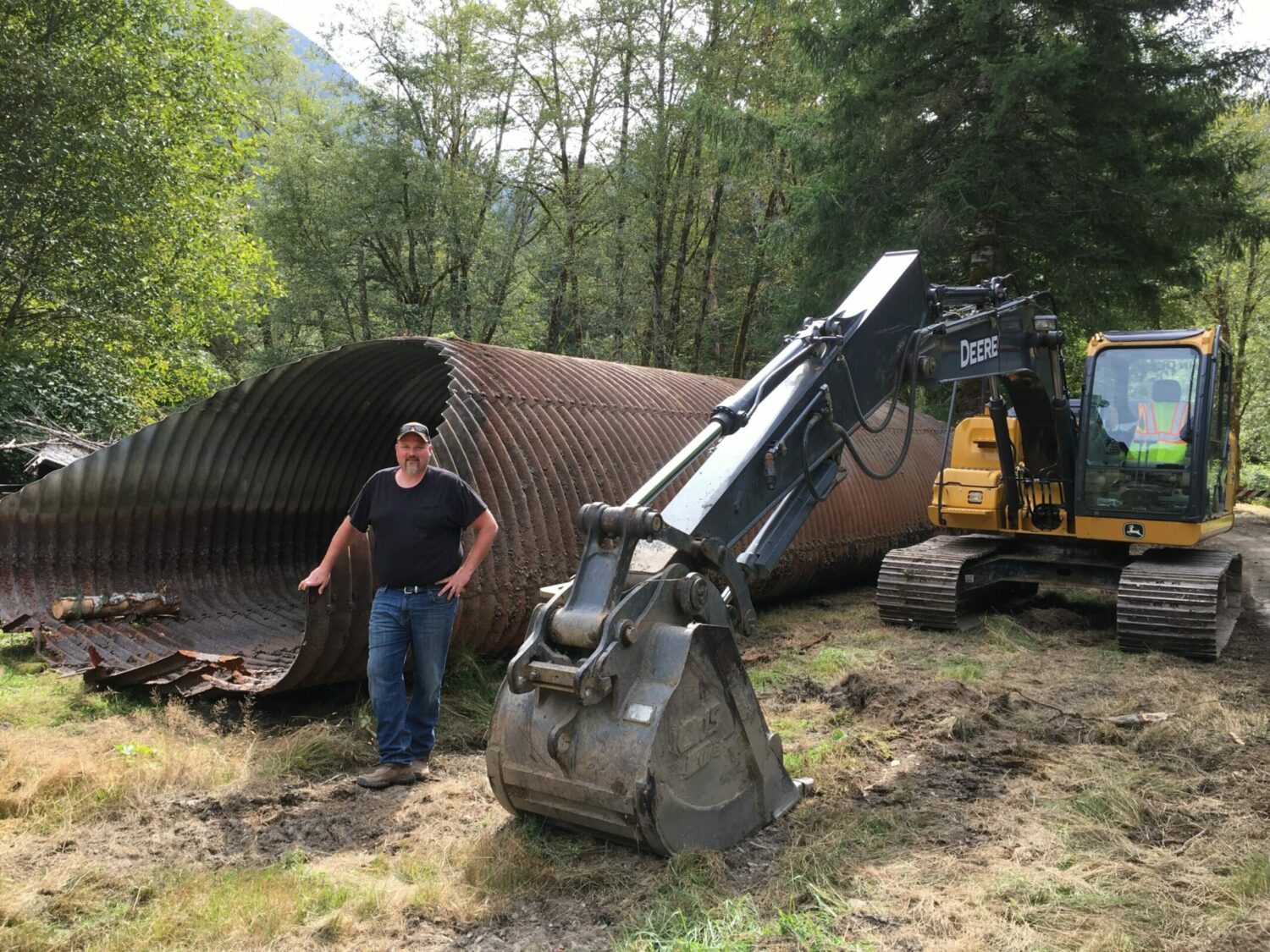
Now, organizations like the Wild Salmon Center are ready to scale this successful partner model on Forest Service lands elsewhere in the Olympic Peninsula. The timing is right, Krier says, with state and federal agencies unlocking historic levels of funding for coastal restoration and resilience projects.
Going forward, that could mean more skilled work for local forest road crews like Nelson’s, and more fish in rivers like the Calawah.
“Projects like this permanently remove threats for fish. And they transform these roads into routes that are still available for non motorized recreational and subsistence uses.”
WSC Salmon Habitat Specialist Betsy Krier
